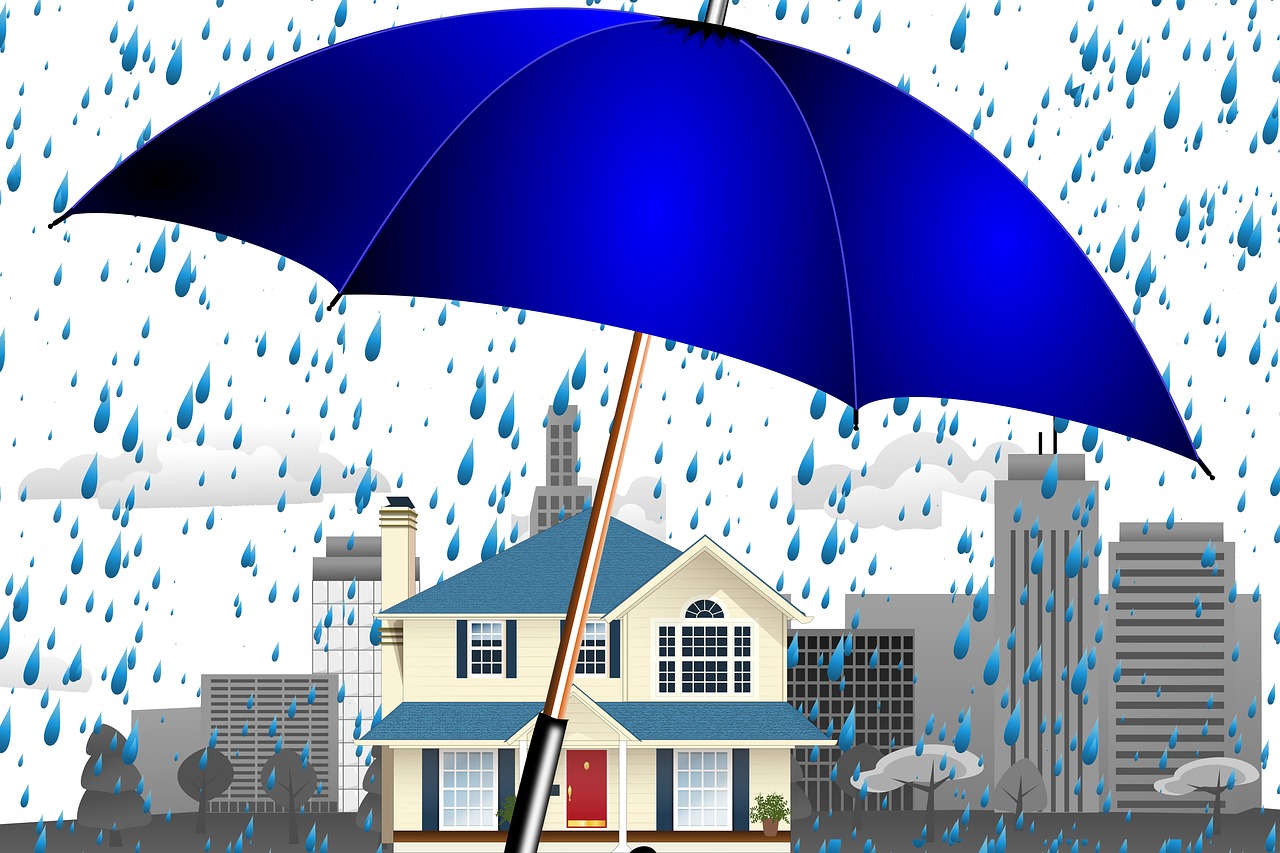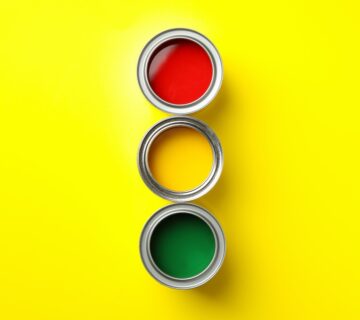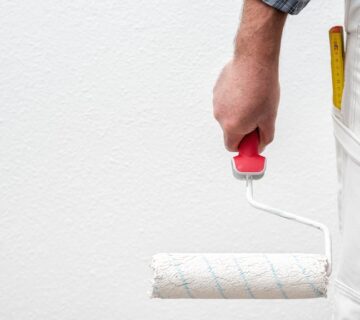In the Pacific Northwest, the wet climate makes exterior house painting challenging. The area’s constant dampness and frequent rains can hinder paint from sticking and drying properly. It’s crucial for homeowners and professionals to understand these weather effects on paint. To ensure a long-lasting and attractive paint job, careful planning and precise timing are essential to navigate these conditions.
Avoid Painting in Rainy Weather
Painting outside during rainy weather is generally not recommended. The air’s moisture and possible rain can prevent paint from adhering well, which might lead to issues like peeling or blistering later on. Despite some claims, there are no reliable methods to paint effectively in wet conditions without costly measures such as elaborate coverings or temporary shelters. Hastily drying the paint with additives or using oil-based paints during damp times may harm the paint’s quality and nullify manufacturer warranties.
Ideal Conditions for Drying Paint
The drying time for paint depends on several factors, including humidity, temperature, and airflow. In ideal situations, most paints can handle a bit of moisture a few hours after application. However, this varies with the type of paint and the level of humidity. Features like gutters, prone to water retention, need to be completely dry. High humidity and low temperatures slow down the drying process, while warm temperatures and light breezes help speed it up.
Understanding Dew Point in Painting
Knowing the dew point is essential in exterior painting. This point is the temperature at which the air saturates, causing dew to form. For paint to dry well, the air temperature should be at least 5 degrees Fahrenheit above the dew point. If the paint is exposed to dew before it sets, it can delay the curing process and spoil the finish. Painters need to plan their painting schedules around this factor to achieve a durable and pleasing result.
Preferred Temperatures for Painting
While mild, sunny weather is ideal for painting, painters often have to work with less perfect conditions. To manage cooler temperatures, painters sometimes use drying agents, enabling them to work even when it’s as cold as 35 degrees Fahrenheit. The dew point, however, is more crucial than the air temperature, as it influences moisture settling on the fresh paint. Monitoring the dew point is vital for planning and executing painting tasks, ensuring the paint sticks and dries correctly.
Painting in the Off-Season
It’s advisable to paint during the warmer midday hours from 10 AM to 2 PM during the off-season. This strategy uses peak temperatures for optimal paint drying and reduces the risk of overnight dew damage. If the weather changes unexpectedly, it’s essential to stop painting to preserve the quality of the work. Quick action to protect any wet paint and manage any rain wash-off is crucial. These steps help ensure the project remains salvageable and successful despite the weather.
Dealing with Painting Mishaps
Handling painting problems like spills or improper curing requires effective cleanup tools and a calm approach. Getting advice from experienced painters or consultants is beneficial, especially in weather-sensitive regions like the Pacific Northwest. Hiring skilled painters who know how to manage the area’s unpredictable climate can be invaluable. Their expertise ensures that the project maintains high standards, saves time and resources, and achieves a successful outcome.
Bottom Line: The Value of Patience in Painting Projects
Patience plays a vital role in exterior painting projects in the Pacific Northwest. The unpredictable and moist climate necessitates careful selection of painting periods. Choosing a clear, dry spell not only makes application smoother and paint adhesion better but also enhances the durability and look of the finish. Proper weather planning can avert common wet-condition issues like bubbling, peeling, and uneven drying. Ultimately, waiting for the right conditions yields a more successful and satisfying result for your home’s exterior. For more tips and expert advice, visit Sisu Painting and explore more at Sisu Painting’s blog.





Thank you for this article! May have saved my paint project – a wall inside a covered porch. I need a second coat on the wall but it’s raining now. No sense in risking it. So, I guess it’s house cleaning day!
My house is on nine foot pilings, is it ok to paint the ceiling part persay, while it’s raining
Thank you for your stirring comments. This will help me get brushed up on my painting skills. Well, time to get rolling. Hope I don’t kick the bucket before I finish.
I live in Rochester, NY … it is The end of September and next week is supposed to be scattered rain, temperatures during the day is 60’s. My contractor is telling me that if he paints in scattered showers the house will be fine. I have read a lot and it states not to paint exterior in the rain. I know that my contractor is just trying to get his jobs done before the end of the season but not at my expense. What should I tell him?
I’d tell him , “No way.” Everything I’ve read says to wait 1-2 days before painting for the house to dry, and even then, the temp needs to be 5 degrees above the dew point, and time to dry before the next rain, as I’m in the same situation, in Seattle in September, with a hard rain having just happened. My daughter’s painter chose to paint without it drying well in April, and now her house is covered in water blisters that are nearly impossible to keep from reappearing.
Hey. Good share.! I think you’ve convinced me that it’s worth doing for home improments, even if I have been a gamer and big fan of being lazy! I don’t know why I am so lazy and tired after fired from salemen job in waltham ma and suffered for couple months of unemployment! I hate the painting itself before, never try to do as a painter for two years until now! I never figure out weather can affect exterior painting and other things in our house! But now your post really helps me to make my house look new and fancy! Thanks so much, keep posting! Barry!
I really appreciate your shoutout to hiring a reputable painter. Painting a house around inclement weather can be a tricky endeavor indeed. Somedays I feel more like a weatherman than a painter- got to be.
Paul Braun
website
Great content. I really like it. It simple yet informative. We’ll know that climate change and weather can affect our house painting just like washing before we start painting. It’s good to see blogs like this for some tips about hiring good house painters to make the work easy. So we need to know about all of the different tips and tricks for painting, it’s great that your blog could contain and support us with helpful ideas! Thanks for sharing!